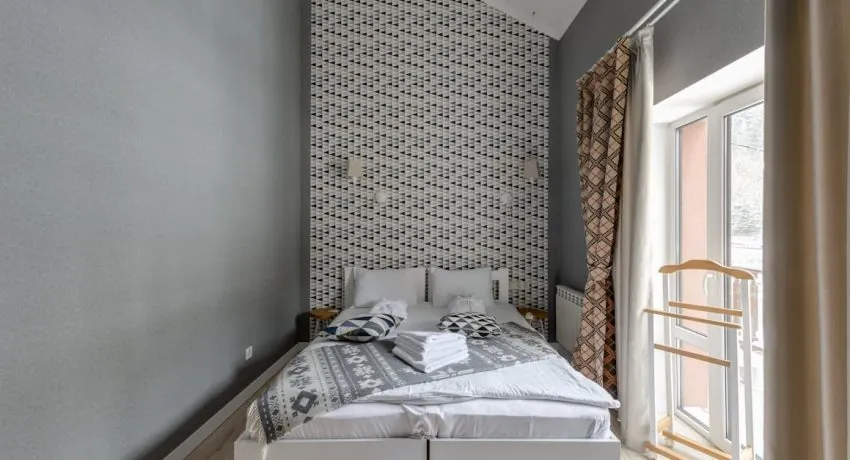Table of Contents
ToggleIn a world buzzing with distractions, the quest for a good night’s sleep can feel like hunting for unicorns. Enter the minimalist sleep space—where less truly is more. Imagine a serene sanctuary that whispers sweet dreams instead of shouting clutter. It’s not just about tossing out the extra pillows; it’s about creating an oasis that invites relaxation and rejuvenation.
Picture this: a calm room with only the essentials, where every item serves a purpose and contributes to a peaceful ambiance. By embracing minimalism, one can turn bedtime into a delightful retreat rather than a nightly wrestling match with chaos. So, if you’re ready to transform your sleep space from a chaotic mess into a tranquil haven, buckle up! It’s time to discover how simplicity can lead to the restful nights you’ve always dreamed of.
What Is a Minimalist Sleep Space?
A minimalist sleep space emphasizes simplicity and tranquility. This type of environment features essential items that promote relaxation and minimize distractions. Many individuals find that reducing clutter enhances their sleep quality. They focus on creating a serene atmosphere that allows for restful nights.
Essential components often include a comfortable mattress, soft bedding, and minimal decorative elements. Furniture choices tend to be simple, prioritizing comfort over extravagance. For instance, one might select a sturdy bed frame that provides support without overwhelming the space.
Natural light plays a key role in a minimalist sleep space. Implementing blackout curtains aids in blocking external light during night hours, while allowing sunlight in during the day promotes a healthy sleep-wake cycle.
Decluttered surfaces contribute significantly to a peaceful environment. Organizing nightstands with only necessary items, like a clock and a book, fosters calmness. Excessive decorations can lead to visual noise.
Color palettes also affect the overall ambiance. Soft, neutral tones create a more inviting atmosphere than bold, vibrant colors. Using earth tones or pastels helps in calming the mind at bedtime.
Implementing plants can enhance air quality within the space. Consider incorporating low-maintenance options like succulents, which add a touch of nature without requiring excessive care.
A minimalist sleep space highlights the importance of intentionality in design. By focusing on essentials, individuals create an environment conducive to relaxation and restorative sleep.
Benefits of a Minimalist Sleep Space
A minimalist sleep space enhances overall well-being through various benefits. Creating a peaceful environment significantly impacts one’s ability to relax and rejuvenate.
Improved Sleep Quality
Improved sleep quality becomes evident in a decluttered and serene environment. Fewer distractions allow for quicker transitions into deep sleep. Comfortable mattresses and soft bedding support better alignment, reducing the likelihood of waking up feeling unrested. Incorporating essential, calming elements like low-maintenance plants enhances the atmosphere and promotes relaxation. The elimination of unnecessary items contributes to fewer disturbances during the night. As a result, individuals experience longer, more restorative sleep cycles.
Reduced Stress Levels
Reduced stress levels occur when chaos transforms into simplicity. A minimalist space fosters a sense of calm, alleviating anxiety linked to cluttered environments. Focusing on essential elements promotes clarity and mental peace. Natural light entering during the day supports a balanced circadian rhythm, enhancing emotional well-being. Lower stress leads to improved concentration and productivity throughout the day. Prioritizing relaxation and comfort in the sleep space creates a sanctuary that nurtures the mind and body.
Creating Your Minimalist Sleep Space
Transforming a bedroom into a minimalist sleep space promotes relaxation and tranquility. The following elements enhance this calming environment.
Choosing the Right Bed and Bedding
Selecting a comfortable mattress determines sleep quality. Prioritize quality materials that offer support, such as memory foam or organic latex. Bedding also matters; soft, breathable fabrics enhance comfort. Consider neutral colors that blend seamlessly with the surroundings. These choices create a serene atmosphere, encouraging restfulness.
Decluttering Your Bedroom
A decluttered space fosters calmness. Start by removing items that don’t belong in the bedroom, including electronics and excessive decor. Organizing nightstands can eliminate distractions; keep only essential items like a lamp or a clock. Utilize storage solutions for clothing and other belongings. Empty surfaces promote mental clarity, allowing for a more peaceful sleep experience.
Simplifying Decor
Simplified decor enhances tranquility. Choose a few meaningful pieces of art or decor that inspire relaxation. Avoid overcrowding walls with multiple items. Opt for a cohesive color palette, favoring soft, neutral tones to maintain a soothing atmosphere. Minimalist decor resonates well with the overall theme, contributing to a harmonious sleep environment.
Essential Elements of a Minimalist Sleep Space
Creating a minimalist sleep space involves selecting key elements that promote tranquility and comfort. These essentials focus on enhancing relaxation while minimizing distractions.
Color Palette and Lighting
Neutral colors provide a calming atmosphere, making them ideal for wall paints and bedding. Soft whites, gentle grays, and muted beiges establish a serene environment. Ambient lighting is crucial; it fosters relaxation as night approaches. Dimmable lamps or soft bedside lights offer gentle illumination. Natural light plays a key role too, promoting a balanced sleep-wake cycle. Blackout curtains block disruptive external light at night, ensuring a dark sleeping space. On sunny days, these curtains can be drawn to invite sunlight, enhancing mood and well-being.
Furniture Choices
Selecting the right furniture elevates the comfort level of a minimalist sleep space. A quality mattress ensures restorative sleep, making it a priority. Bed frames with clean lines contribute to simplicity, while nightstands should be functional yet unobtrusive. Choosing minimalist designs allows for easy organization of essentials, like a lamp or a book. Comfortable seating can enhance relaxation when reading or unwinding before bed. Incorporating fewer, purposeful pieces reduces visual clutter and maintains an open feel, promoting a peaceful sleep habitat.
Transforming a sleep space into a minimalist haven can significantly enhance rest quality. By prioritizing comfort and simplicity, individuals can create an environment that fosters relaxation and promotes deeper sleep. The intentional design choices made in a minimalist sleep space not only reduce distractions but also cultivate a sense of calm.
As clutter diminishes and soothing elements are introduced, the benefits extend beyond sleep, positively impacting overall well-being. Embracing minimalism in the bedroom is not just about aesthetics; it’s about nurturing a sanctuary that supports restorative sleep and emotional balance. A well-designed sleep space can be the key to unlocking better health and a more peaceful mind.




